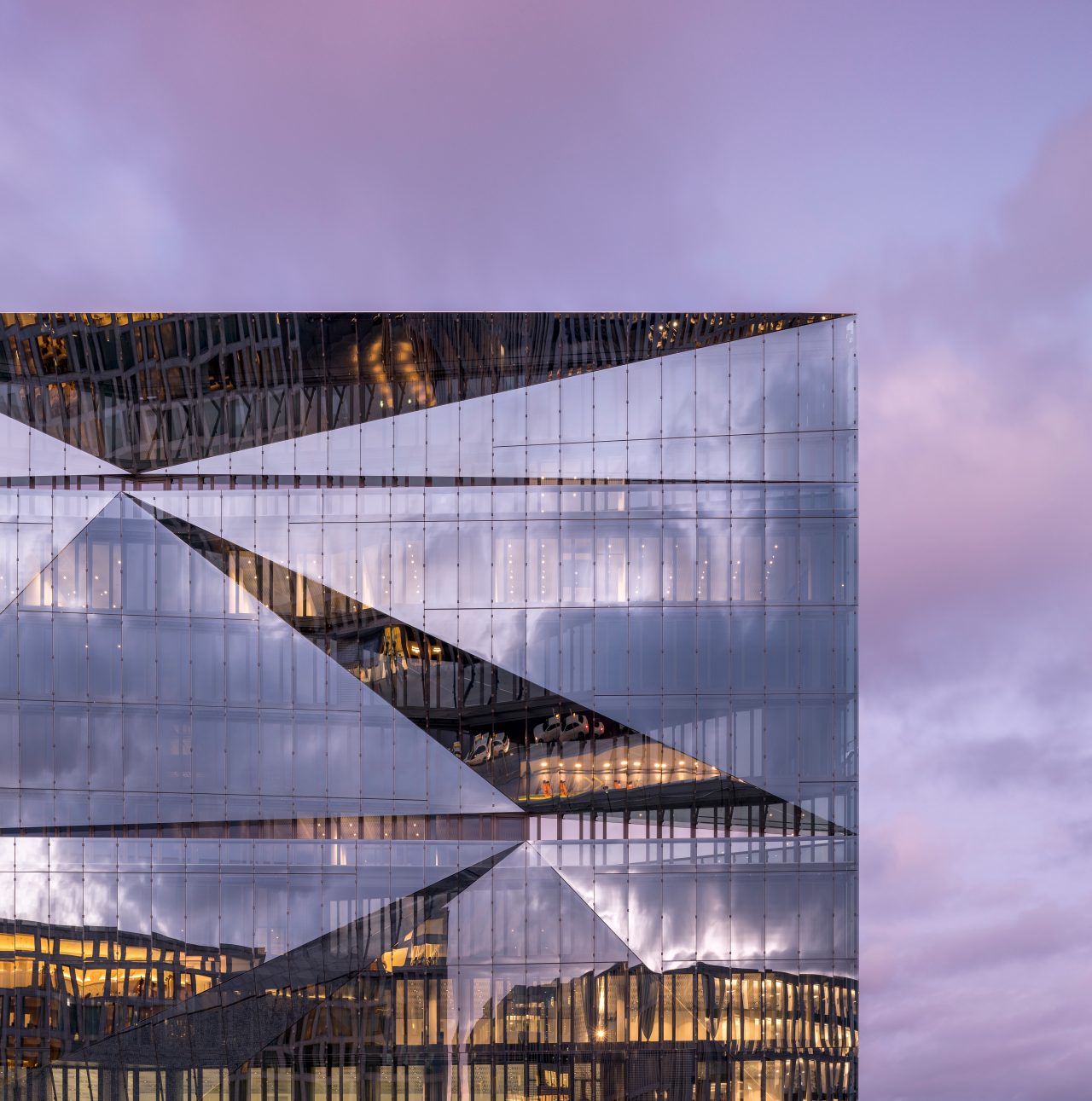The aesthetics of glass

Find your glass look: glass aesthetics
Imagine being able to draw transparency or create clarity. What architectural element can change the perception of space while appearing invisible? Glass. It can be an inconspicuous frame for other design elements, or it can take center stage as a vividly clear, low-iron curtain wall or a bold, curved glass accent.
Glass is a valuable and versatile design tool
At the same time as providing clear views for occupants, glass can “disappear” to highlight other architectural elements. The transparency of glass allows us to fully witness the art of architectual design, from historic buildings such as the elegant Grand Hotel Dieu in Lyon, France, to modern structures like the Fjordenhus in Vejle, Denmark. And in interiors glass can become invisible again, as walls and partitions, adding depth by allowing natural light into spaces.

Clean, fluid look
Glass can also feature front and center in monumental projects like W Barcelona “La Vela”, while its versatility is on display at 7 St. Thomas in Toronto, where curved, low-iron and spandrel glass combine to deliver an unforgettable facade. For a harmonized, fluid feel, spandrel glass helps create a uniform appearance or, as in 7 St. Thomas, can reinforce or even create a design element. Learn more about spandrel glass and its applications.

Clarity
Glass facades allow occupants to enjoy clear views from the comfort of light-filled spaces. Interior glass applications help move natural light further within. Partitions, balustrades, railings and more eliminate boundaries and bring out the beauty of the space.
When you seek maximum glass clarity and neutrality, choose low-iron glass. Standard glass includes iron, which gives it a green tint. Manufacturers can reduce the amount of iron oxide to reduce this, creating glass that is noticeably clearer and more neutral. This transparency means views are more vibrant and colors truer and more vivid.
High reflectivity
High glass reflectivity means building occupants have more privacy during the day than with low glass reflectivity. You can maintain a neutral appearance with a highly reflective glass, or achieve a desired look, such as silver, without adding a tinted substrate that would impact the neutrality of the light transmitted to the inside of the building.

Low reflectivity
Alternately, low glass reflectivity permits unobstructed views through the glass. This is particularly desirous for retail applications, as a neutral aesthetic and less reflectivity mean passers-by can see in and retailers can showcase products. Or, in another example, rooftop restaurants can offer beautiful views along with the food experience.

Bilbao light and glass
Looking at the glass from the outside, you see the sky and surrounding environment instead of the interior. This stunning transformation of the Basque Health Department Headquarters in Bilbao, Spain is an example of how high reflectivity out can change a building’s appearance through the day, making it almost disappear into the landscape.
You have the ability to select the right reflectivity for your project, whether a residential tower owner wants true transparency (low reflectivity in and out), or more privacy for residents while they enjoy the view, even at night (glass high reflectivity out with low reflectivity in).
Color
Coated glass gives you a wide-ranging portfolio of shades to create visual interest by building with light; such as a blue, green or grey exterior. Or bring the visual interest inside: glass whiteboards offer functionality and elegance to office spaces, whether in business or at home. Learn more and see examples of glass color options.

Curves
Curved glass can range from cylindrical looks to more complex, 3D forms. Curved glass opens up endless opportunities for you to design innovative, organic facades. Corners can be completely transparent. Buildings can delight and transfix. And you can experiment with the flow of daylight through curved glass. All without compromising the structural integrity of the insulating glass unit and the entire façade. Learn more about the properties of curved glass and to see what’s possible™.
.tif.transform/rendition-1171-854/img.png)



.jpg.transform/rendition-470-280/img.jpg)


